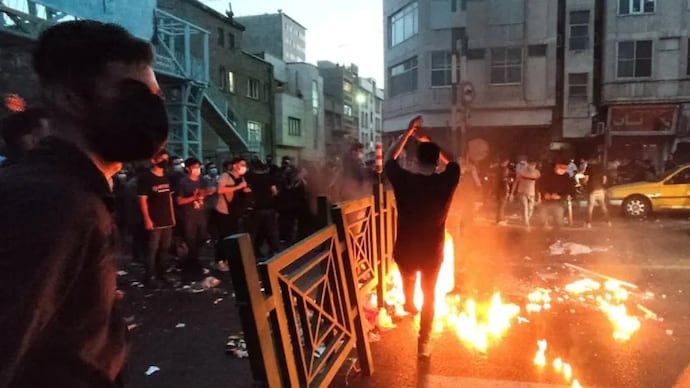
In the midst of ongoing unrest in the nation, Iran’s Revolutionary Court has condemned one anti-government demonstrator to death and given jail terms to five others, according to official television on Sunday. The verdict most likely represents the first death sentence in the trials of people detained for taking part in the anti-clerical rule rallies that have rocked Iran over the past few weeks.
The verdicts were handed down by various branches of the Revolutionary Court

According to Mizan, a news source affiliated with Iran’s court, the protester’s claims of setting fire to a government facility led to the death penalty. Five people were sentenced to prison terms ranging from five to ten years for alleged infractions of public order and national security.
The verdicts were handed down by various branches of the Revolutionary Court, according to Mizan, who did not provide any additional information about the protesters who were on trial and have the right to appeal the rulings.
The court, which was established in the wake of the 1979 Islamic Revolution, is renowned for imposing severe penalties on those who challenge their rule.
People have been charged with “corruption on earth” and “war against God” in Iran

Iran has already filed criminal charges against hundreds of jailed demonstrators, announcing that public hearings will be held for their cases. The death in detention of Mahsa Amini, 22, who was arrested for allegedly breaking the nation’s strict dress code for women, ignited anti-government protests, which are now in their eighth week.
Hundreds of people in other Iranian provinces had charges announced against them by judicial officials. Some people have been charged with “corruption on earth” and “war against God,” both of which are crimes that are punishable by death.
According to the Oslo-based Iran Human Rights, security forces, including paramilitary volunteers with the Revolutionary Guard, mercilessly suppressed the protests, murdering over 300 people, including many children. According to Iranian authorities, the widespread disturbance also claimed the lives of more than 40 security personnel.
The protests, which initially aimed to end Iran’s hijab (mandatory head covering) law, have since evolved into one of the most significant challenges to the country’s ruling clerics since the tumultuous years that followed the 1979 Islamic Revolution.






